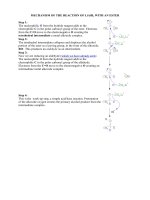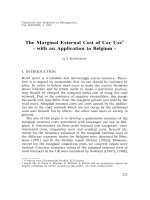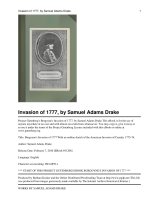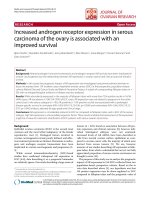MECHANISM OF THE REACTION OF LiAlH4 WITH AN ESTER
Bạn đang xem bản rút gọn của tài liệu. Xem và tải ngay bản đầy đủ của tài liệu tại đây (60.9 KB, 1 trang )
MECHANISM OF THE REACTION OF LiAlH
4
WITH AN ESTER
Step 1:
The nucleophilic H from the hydride reagent adds to the electrophilic
C in the polar carbonyl group of the ester. Electrons from the C=O
move to the electronegative O creating the tetrahedral intermediate
a metal alkoxide complex.
Step 2:
The tetrahedral intermediate collapses and displaces the alcohol
portion of the ester as a leaving group, in the form of the alkoxide,
RO
-
. This produces an aldehyde as an intermediate.
Step 3:
Now we are reducing an aldehyde (which we have already seen)
The nucleophilic H from the hydride reagent adds to the electrophilic
C in the polar carbonyl group of the aldehyde. Electrons from the
C=O move to the electronegative O creating an intermediate metal
alkoxide complex.
Step 4:
This is the work-up step, a simple acid/base reaction. Protonation of
the alkoxide oxygen creates the primary alcohol product from the
intermediate complex.









